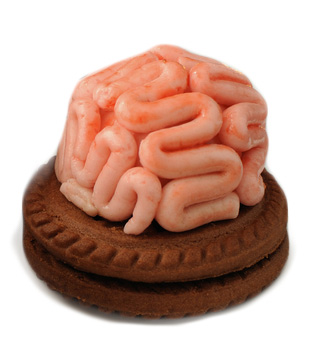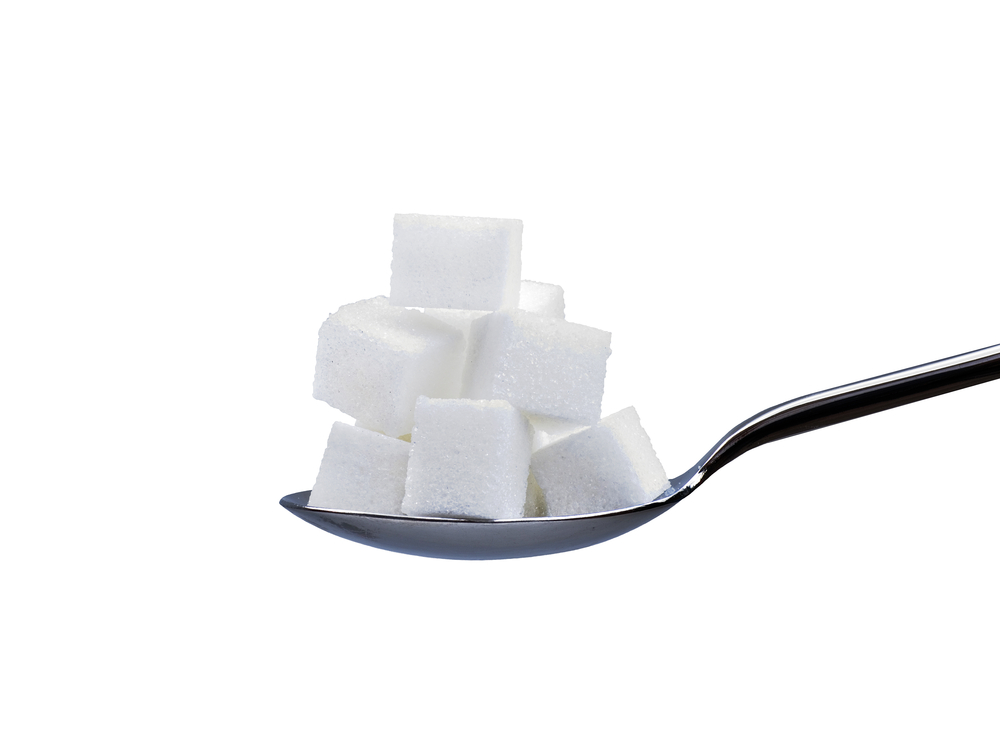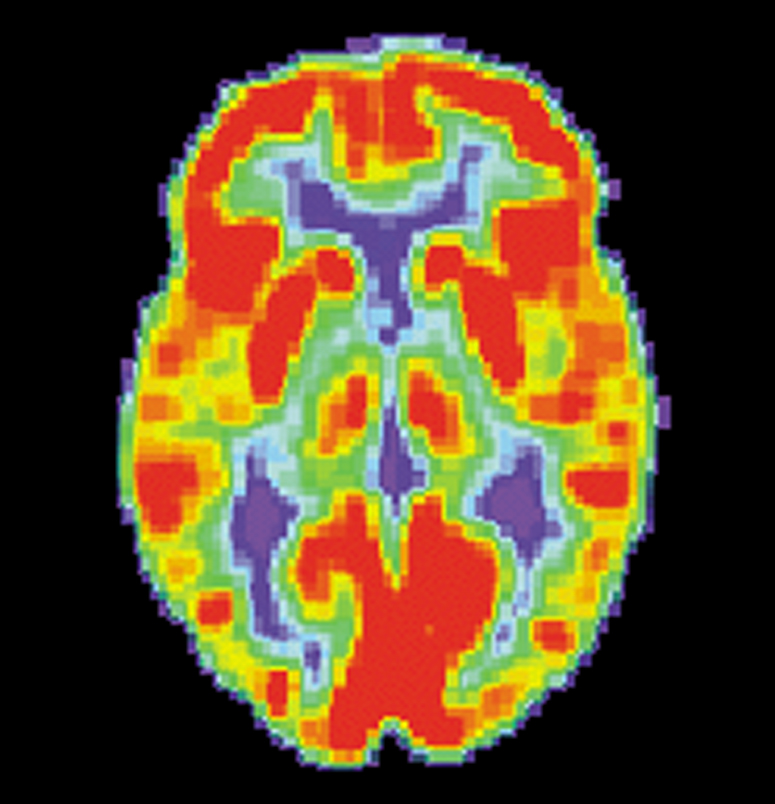
The sweet lowdown: Huntington's disease brains use sugar differently
New observations suggest that the brains of HD mutation carriers consume energy differently. Do we care? (Yes!)

The brain is a very hungry organ, but does it consume energy differently in Huntington’s disease? A team led by David Eidelberg of the Feinstein Institute for Medical Research has been studying the patterns of energy consumption in the brains of people carrying the HD mutation. Changes in how much sugar the brain uses are seen even before the brain starts to change physically, suggesting this might be a useful thing to track in HD clinical trials.
Why do we want to find early changes in HD brains?
We all would like to test drugs with the goal of delaying or halting the onset of Huntington’s Disease. But the development of HD symptoms takes so long — decades, usually — that it’s tricky to design clinical trials.

To make clinical trials more efficient, HD scientists are on the hunt for biomarkers. An example of a successful biomarker is the measurement of blood pressure, which enables doctors to estimate the risk of heart attack and stroke.
We now know that drugs that reduce blood pressure will help prevent heart attacks and stroke. That accelerates the development of new drugs, because there’s no need to wait until people go on to actually have heart attacks.
We would love to have a similar measurement in HD patients. Rather than giving a huge group of people drugs and waiting many years to see if the progression of HD is slower, we’d like to have measurements we can use to test, quickly, if a HD therapy is having beneficial effects.
Examining the living HD brain
Many people with Huntington’s disease have had one or another type of ‘brain scan’, either as part of research, or to help their doctor track what’s happening to their brains. All brain scans have the goal of creating an image of the brain, but they use different technology to see different features of brain tissue. This is a bit like how a photograph and an ink drawing of the same thing can appear different, even though they’re pictures of the same object.
Most frequently, people with HD will have brain scans with a machine called a magnetic resonance imaging or MRI machine. MRI uses powerful magnets to show the precise shape and structure of the brain. In HD, we want to do this so we can compare the brains of HD patients to people without the mutation, or to compare the scans of someone before and after they have a drug treatment. This could help us find drugs that slow down, or stop, the loss of brain tissue that’s observed in the course of HD.
Many scientists believe these shape changes, detected with MRI, are among our best hopes for producing HD biomarkers. But there are other types of scan that could add to the picture, too.
The brain has a sweet tooth
The brain is the hungriest organ in our bodies. Despite the fact that it only comprises about 2% of our body weight, it consumes about 20% of the sugar we eat every day. This means that the sugar your brain eats each day weighs about as much as a full can of soda!
“These brain regions might be compensating for the ongoing damage in other parts of the brain”
All this energy goes into fueling communication between brain cells. Each of our 100 billion brain cells are connected to thousands of other cells at something like 100 trillion synapses. Synapses simply the points of connection between two brain cells. It’s the energy required by this mind-bogglingly large amount of chatter between brain cells that eats up most the sugar the brain consumes.
Surprisingly, even when we are resting and it feels like we’re not doing much our brain, it’s working at almost maximum capacity. When we start thinking hard about a problem, or doing a specific task, different parts of our brain get engaged, but there’s always plenty going on up there.
Scientists can take advantage of this huge flow of sugar into the brain for another type of brain scan, called positron emission tomography, or PET scans. PET scanning is neat, because it lets us use a tracer molecule to look at the chemical activity of specific parts of the brain, while ignoring the rest of the brain.
One of the simplest tracers scientists use in PET scans is called ’18FDG’ (18-fluorodeoxyglucose, for the geeks). 18FDG is almost identical to glucose, the kind of sugar eaten by our brains, with the addition of a chemical tag that lets scientists see where it goes.
So the experiment is pretty simple. Take some people carrying the HD mutation, give them an IV injection of 18FDG sugar, and put them in a PET scanner. Look at the images that come out of the scanner, and in particular look for specific regions of the brain that eat more or less sugar in HD patients.
No brain cell is an island
The group of scientists led by Eidelberg decided to do this experiment, and in a very smart way. They started with 12 people who had the HD mutation, but didn’t yet have any symptoms of the disease. Each person was scanned initially, and then again one-and-a-half, four and seven years later. This lets them study how the brains of individuals change over time, exactly as would be done in a drug trial. After the first study was done, a separate group of mutation carriers was examined, to validate the findings of the first study.
In addition doing 18FDG scanning to look at sugar consumption, the scientists looked at brain shape changes, as well as other PET tracers that are known to change in HD patient brains.
All the cells of the brain work by sending messages to one another. This happens on a short scale — one neighbor whispering to another — but also on a larger scale. In fact, the whole brain is rigged up with with ‘white matter’ highways that connect one brain area to another.

Given how important communication is in the brain, this team of scientists decided to focus not just on changes in one particular area, but the entire network of brain scan changes. They reasoned that no brain region works by itself, and that by looking at the whole brain we might see interesting patterns.
Hope for compensation
As expected, the team observed widespread changes in the brains of HD mutation carriers. Their brains shrunk, and the PET scans also showed robust changes over the years as they got closer to experiencing symptoms.
Surprisingly the team observed that, while many brain regions in HD mutation carriers consume less sugar over time, other regions of the brain actually consume more. We’re not sure why yet, but one exciting possibility is that these other brain regions might be compensating for the ongoing damage in other parts of the brain, working harder to pick up the slack to keep the person functioning somewhat normally.
This is hopeful, because if the brain actually is finding ways to compensate for damage in HD, maybe we can help it by slowing the damage, buying it more time to work well. This study doesn’t prove that this is possible, but it does tell us where we need to look.
The whole-brain ‘network’ approach of analysis taken by the scientists turned out to be more powerful than looking just at changes in individual brain regions. They argue that looking at the network of changes in sugar consumption in the brain reveals the earliest ever observed changes in the brains of HD patients, and showed changes before any obvious changes in brain shape had occurred.
The hunt for biomarkers continues, but this study is a great addition to the armory of brain changes that drug hunters can use to test their products.
Learn more
Sources & References
For more information about our disclosure policy see our FAQ…


